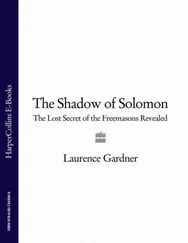471 From GIS analysis of aforementioned spatial data I estimate 284,247 km 2of Indian reservations in the conterminous United States and 4,358,247 km 2covered by Canadian land claims agreements as of 2009.
472 As a rule, Lapp is now considered derogatory and should be avoided in favor of Sámi or Saami.
473 Personal interviews with Aili Keskitalo, president, Norwegian Sámi Parliament (Tromsø, January 23, 2007); Nellie Couroyea, chair/CEO, Inavialuit Regional Corporation and former NWT premier (Tromsø, January 23, 2007); Lars-Emil Johansen minister of foreign affairs and former prime minister (Greenland, May 24, 2007); Mike Spence, mayor of Churchill (Manitoba, June 28, 2007); Elisapee Sheutiapik, mayor of Iqaluit (Nunavut, August 5, 2007); Eli Kavik, mayor of Sanikiluaq (Nunavut, August 7, 2007); Richard Glenn, vice-president, Arctic Slope Regional Corporation (Barrow, Alaska, August 22, 2008); Tony Penikett, former Yukon premier (Ottawa, June 1, 2009); Mary Simon, president, ITK (Inuit Tapiriit Kanatami, Canada’s national Inuit organization, Ottawa, June 2, 2009); Ed Schultz, executive director, Council of Yukon First Nations (Ottawa, June 4, 2009).
474 The United Nations Permanent Forum on Indigenous Issues (UNPFII) produced the Declaration on the Rights of Indigenous Peoples, the “most comprehensive statement of the rights of indigenous peoples ever developed, giving prominence to collective rights to a degree unprecedented in international human rights law,” adopted by the General Assembly September 13, 2007, http://www.un.org/esa/socdev/unpfii/ (accessed September 6, 2009). All five Nordic countries voted in favor of this declaration. Australia, the United States, and Canada voted against it; Russia was one of eleven countries abstaining.
475 Norway’s Finnmark Act of 2005 transferred 96% of Finnmark County’s land ownership to a council called the Finnmark Commission, comprised of representatives from the Sámi Parliament as well as the local and central governments. Minority Rights Group International, World Directory of Minorities and Indigenous Peoples—Norway: Overview, 2007, http://www.unhcr.org/refworld/docid/4954cdff23.html (accessed September 10, 2009).
476 According to Aili Keskitalo, president, Norwegian Sámi Parliament, personal interview, Tromsø, January 23, 2007.
477 J. Madslien, “Russia’s Sami Fight for Their Lives,” BBC News, December 21, 2006, http://news.bbc.co.uk/2/hi/business/6171701.stm.
478 M. M. Balzer, “The Tension between Might and Rights: Siberians and Energy Developers in Post-Socialist Binds,” Europe-Asia Studies 58, no.4 (2006): 567-588. See also A. Reid, The Shaman’s Coat: A Native History of Siberia (New York: Walker & Company, 2002), 226 pp.
479 However, outright land ownership is a backburner issue in Russia. Most Russians, including aboriginals, view private land ownership as nonessential and even inappropriate. Aboriginal people are more concerned with winning stewardship, protections from competing uses, and the ability to pass use of the land on to their descendants. G. Fondahl and G. Poelzer, “Aboriginal Land Rights in Russia at the Beginning of the Twenty-first Century,” Polar Record 39, no. 209 (2003): 111-122.
480 A very small aboriginal group called the Yukagir people successfully fought for the adoption of a special law guaranteeing them self-governance in the two townships of Nelemnoe and Andrushkino, where much of their population (1,509 people in 2002) lives. P. 97, Arctic Human Development Report (Akureyri, Iceland: Stefansson Arctic Institute, 2004), 242 pp.
481 S. N. Kharyuchi, “Option (sic) letter by the delegates of the VI Congress of indigenous small-numbered peoples of the North, Siberia and the Far East of the Russian Federation” (open letter to President Dmitry Medvedev and Chairman Vladimir Vladimirovich Putin regarding the sale of twenty-year commercial salmon fishing leases in Kamchatka), May 12, 2009, RAIPON, http://www.raipon.org/RAIPON/News/tabid/523/mid/1560/newsid1560/3924/Option-letter-by-the-delegates-of-the-VI-Congress-of-indigenous-small-numbered-peoples-of-the-North-Siberia-and-the-Far-East-of-the-Russian-Federation/Default.aspx (accessed September 15, 2009). See also G. Fondahl, A. Sirina, “Rights and Risks: Evenki Concerns Regarding the Proposed Eastern Siberia-Pacific Ocean Pipeline,” Sibirica 5, no. 2 (2006): 115-138.
482 On September 7, 1995, Aleksandr Pika and eight others disappeared after setting out from the town of Sireniki, Chukotka, by boat. Five days later the overturned boat and five bodies were found, with Pika’s among the unrecovered. Quote is from p. 16, Aleksander Pika, ed., Neotraditionalism in the Russian North (Edmonton: Canadian Circumpolar Institute Press, and Seattle: University of Washington Press, 1999), 214 pp.
483 Russian Federal Law 82-F3, April 30, 1999, O garantiyakh prav korennykh malochislennykh narodov Rossiyskoy Federatsii (“On guarantees of the rights of the indigenous numerically small peoples of the Russian Federation”); Russian Federal Law 104-F3, July 20, 2000, Ob obshchikh printsipakh organizatsii obshchin korennykh malochislennykh narodov Severa, Sibiri i Dal’nego Vostoka Rossiyskoy Federatsii (“On general principles for organization of obshchinas of the indigenous numerically small peoples of the north, Siberia, and the Far East of the Russian Federation”); Russian Federal Law 104-F3, July 20, 2000 , O territoriyakh traditsionnogo prirodopol’-zovaniya korennykh malochislennykh narodov Severa, Sibiri i Dal’nego Vostoka Rossiyskoy Federatsii (“On territories of traditional nature use of the indigenous numerically small peoples of the north, Siberia, and the Far East of the Russian Federation”). Translations by G. Fondahl and G. Poelzer, “Aboriginal Land Rights in Russia at the Beginning of the Twenty-first Century,” Polar Record 39, no. 209 (2003): 111-122.
484 P. 50, Arctic Human Development Report (Akureyri: Stefansson Arctic Institute, 2004), 242 pp.
485 Unlike other NORC countries, Canada currently has no university in the far north, but there is growing pressure to found one. In general, the fights in North America and Greenland will move on from issues of property title and political governance to other problems of education, public health, and the devolution of natural resource revenues, which are beyond the scope of this chapter.
486 E.g., conservation of mass and energy, gas laws, radiative transfer and cloud physics, fundamental geography like the positions and elevations of the continents and size and rotation rate of the planet, proper parameterizations for subgrid processes, and aerosols.
487 R. B. Alley, The Two-Mile Time Machine: Ice Cores, Abrupt Climate Change, and Our Future (Princeton: Princeton University Press, 2000), 229 pp.
488 K. C. Taylor et al., “The ‘Flickering Switch’ of Late Pleistocene Climate Change,” Nature 361 (1993): 432-436, DOI:10.1038/361432a0; R. B. Alley et al., “Abrupt Increase in Greenland Snow Accumulation at the End of the Younger Dryas Event,” Nature 362 (1993): 527-529, DOI:10.1038/362527a0.
489 B. L. Isacks et al., “Seismology and the New Global Tectonics,” Journal of Geophysical Research 73, no. 18 (1968): 5855-5899.
490 The project ended up with some interesting results after all, thanks in part to Richard Alley. It found that a mathematical technique called wavelet analysis is useful for detecting hidden climate signals in river flow data. L. C. Smith, D. L. Turcotte, B. L. Isacks, “Streamflow Characterization and Feature Detection Using a Discrete Wavelet Transform,” Hydrological Processes 12 (1998): 233-249.
491 Greenland Ice Sheet Project 2, drilled between 1989 and 1993 near the center of Greenland.
Читать дальше












